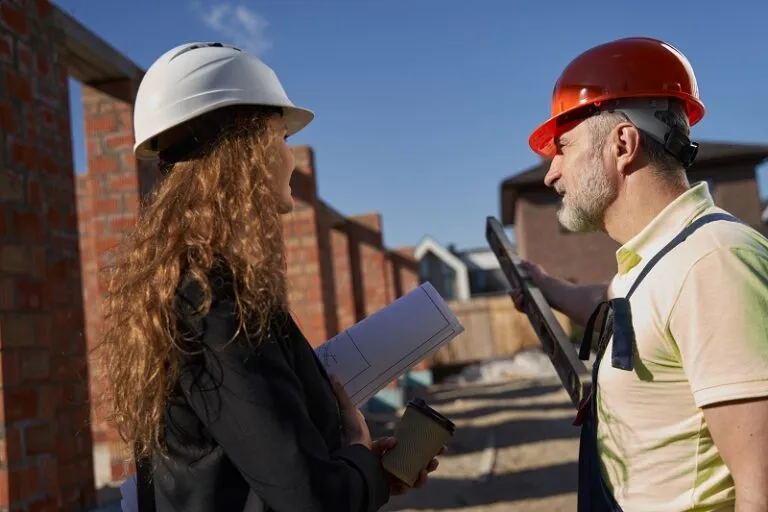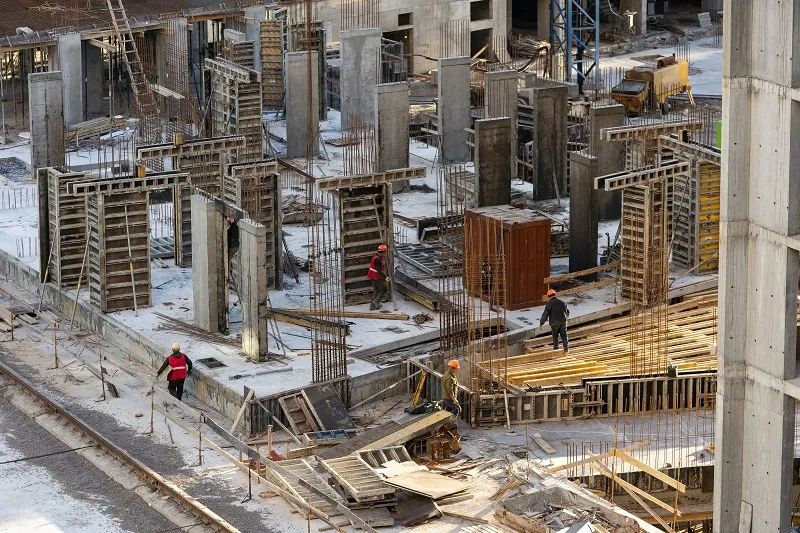As the holiday season approaches, Australia’s construction sector is heading into what has traditionally been one of the busiest and most stressful periods of the year. The weeks leading up to Christmas often see a surge in demand for completed projects and last-minute orders, as clients push to finish builds and renovations before the holidays begin. Yet this year, industry leaders, safety experts and trade groups are voicing growing concern about the potential risks posed by the seasonal rush. From workplace accidents and mental health challenges to compliance pitfalls and supply chain disruptions, the call to action is clear: the construction industry must prepare, plan and exercise caution to ensure a safe, productive lead-up to Christmas.
A Seasonal Surge in Demand
The period between October and December is notoriously busy for Australia’s construction industry. Homeowners eager to host festive gatherings in upgraded spaces scramble to finalise renovations. Commercial clients push for project milestones before holiday shutdowns. Property developers hope to showcase completed units or infrastructure upgrades ahead of the new year. This year, amid a hot property market and an ongoing pipeline of infrastructure projects, the pressure has intensified.
Builders, contractors and tradespeople face tight deadlines, increasing workloads, and rising client expectations. While this surge in activity can mean healthy profits, it also heightens the risk of cutting corners, overworking staff, and straining supply chains. The result is an environment where even minor oversights can lead to costly mistakes, accidents and long-term damage to reputations.
Safety Concerns Under the Spotlight
One of the top warnings coming from industry groups relates to safety. Work Health and Safety (WHS) regulations in Australia are stringent, and compliance is non-negotiable. However, when facing the Christmas rush, some construction companies may feel tempted to skip certain safety protocols in the interest of saving time. This is a dangerous gamble. The construction industry already faces inherent risks, including falls, equipment-related injuries and exposure to hazardous materials. Under time pressure, these risks can multiply.
Safe Work Australia and state-level regulators have issued repeated reminders that busy periods must not compromise workplace safety. Employers are urged to maintain strict adherence to WHS standards, ensure proper training and supervision, and encourage workers to speak up if they feel unsafe. Adequate rest breaks, regular equipment checks and safe material handling are all crucial. The message is clear: no deadline is worth endangering the lives and well-being of workers.
Mental Health and Worker Well-Being
Beyond physical safety, the holiday period can take a toll on the mental health of those in the construction sector. Stress levels can skyrocket as deadlines loom, project complexities pile up and crews put in long hours in sometimes extreme conditions. Workers may find themselves battling fatigue, anxiety and emotional strain, further clouding their judgment and increasing the risk of mistakes.
Industry associations, unions and mental health advocates are calling on employers to pay close attention to their workforce’s emotional well-being. Encouraging open communication, providing access to professional support services and promoting work-life balance are strategies that can help. Some companies are scheduling mental health check-ins, offering flex-time where possible and ensuring that workers have downtime to recharge. These steps not only protect employees’ mental health but also help maintain consistent, high-quality workmanship.
Supply Chain Strains and Material Shortages
The construction industry’s warnings ahead of the Christmas rush also extend to supply chain challenges. The pandemic has shown how vulnerable global supply chains can be to disruption. As demand surges, securing timely deliveries of raw materials, equipment and fittings becomes more difficult. Ports may experience congestion, shipping costs can spike and certain products might become scarce.
Industry bodies recommend careful forward planning. Builders and project managers should confirm delivery schedules well in advance, maintain close relationships with suppliers and consider keeping extra inventory of critical materials. Having contingency plans — alternative suppliers, substitute materials or flexible project timelines — can cushion the impact if something goes wrong. While these measures may add upfront costs, they can prevent far bigger losses if materials fail to arrive as the Christmas deadline nears.
Managing Client Expectations

Clients are often the driving force behind the pre-Christmas construction rush. Whether it’s homeowners wanting a new kitchen ready for holiday entertaining or retailers aiming to open a refreshed storefront before the festive shopping period, customer expectations can be sky-high. Communicating openly and realistically about what can be achieved within a given timeframe is vital.
Industry associations advise construction businesses to avoid overpromising. If a job truly cannot be completed before the holidays, it’s better to be honest from the start. While a client may be disappointed, they’ll appreciate transparency far more than rushed work that leads to defects or incomplete projects. Clear communication around timelines, potential delays and contingency plans builds trust and can reduce the strain on everyone involved.
The Rise of Compliance Pitfalls
In the scramble to finalise projects, companies may inadvertently run into compliance issues. Failing to obtain the right permits, disregarding local council regulations or not meeting environmental standards could lead to fines, work stoppages and legal battles — both during and after the holiday period.
Regulators and industry bodies have been reminding construction professionals to double-check their paperwork. Before ramping up activities, project managers should ensure all necessary approvals are in place. Likewise, documenting safety measures, project changes and material sourcing can safeguard against potential compliance challenges. This administrative diligence, though time-consuming can prevent costly interruptions and protect a company’s reputation long after the Christmas decorations are packed away.
Tech Tools and Innovative Solutions
The modern construction industry has a range of tools and technologies at its disposal to manage the pressures of the Christmas rush more effectively. Project management software, Building Information Modeling (BIM) tools and real-time tracking applications can help streamline processes, coordinate teams and anticipate delays. Drone inspections, 3D printing for custom components and improved on-site communication tools further enhance efficiency and safety.
Embracing technology does not eliminate the need for human oversight and professional judgment. Still, it can offer a competitive edge. For example, construction managers can schedule tasks more realistically, track worker fatigue, and get immediate alerts if safety standards slip. This data-driven approach supports informed decision-making, leading to a more controlled and safer project environment amid the end-of-year rush.
Learning from Past Mistakes
The Australian construction industry has faced numerous seasonal surges before. By reflecting on past mistakes and successes, companies can learn valuable lessons. One key takeaway is the importance of early planning. Don’t wait until late November to realise that the volume of work is unmanageable. Setting realistic deadlines, establishing clear responsibilities and staggering workloads can help prevent last-minute chaos.
Another lesson is the value of building a safety culture and resilience year-round. When workers, supervisors and management all understand that safety and quality must never be compromised, busy periods become easier to manage. Empowering employees to speak up about concerns, running regular training sessions and rewarding safety-minded behaviour all contribute to a workplace that can handle stress without cracking.
Collaborative Efforts Across the Industry
Addressing the challenges of the Christmas rush requires collaboration. Industry associations, trade unions, government regulators and suppliers can pool their expertise and resources. Sharing best practices, issuing joint safety advisories and offering training modules can help raise standards across the board. By working together, the industry can present a united front, sending a clear message that safety, quality, and worker welfare are top priorities — no matter the time of year.
Unions, for example, can negotiate for reasonable working hours in enterprise agreements, preventing employers from pushing workers too hard. Suppliers can offer flexible delivery options or hold strategic reserves of materials. Regulators can conduct timely inspections, rewarding companies that maintain high standards and offering constructive feedback where improvements are needed.
Preparing for a Healthier, Happier New Year
As the construction industry braces for the year-end surge, the warnings issued by experts are not about slowing progress or turning down business; they’re about finding a balance that keeps people safe and projects successful. The lessons learned during the Christmas rush can inform practices throughout the year. A proactive approach to safety, mental health, supply chain resilience and honest client communication benefits everyone, not just during the holidays but every day.
Companies that handle the Christmas crunch responsibly stand to gain long-term advantages. Their workers will appreciate safer environments and more balanced workloads, improving morale and retention. Clients will trust firms that deliver on promises without cutting corners. Regulators will look more favourably on businesses that maintain compliance during the toughest of times. And, ultimately, the entire Australian construction industry will come out stronger, more efficient, and more respected.
A Cautious but Constructive Path Forward
The Christmas season may bring its share of pressures to the Australian construction sector, but it also provides an opportunity. By heeding the warnings and advice of industry leaders, embracing technology and putting safety and worker well-being first, businesses can meet the holiday demand without compromising on quality or integrity. The key lies in planning, communication and a commitment to doing things right—even when the clock is ticking.
This holiday season, as construction sites bustle with activity and deadlines loom, the industry’s focus on caution, cooperation and care will help ensure that everyone — from the builder on the scaffolding to the homeowner awaiting their new living space — gets what they want most: a safe, successful lead-up to Christmas and a strong start to the new year.




